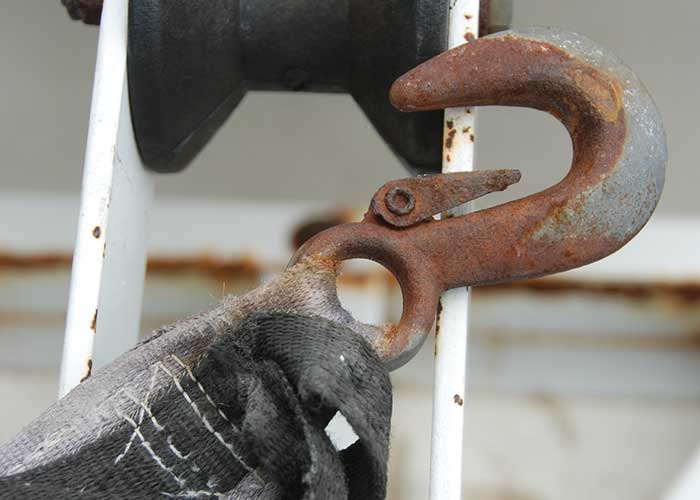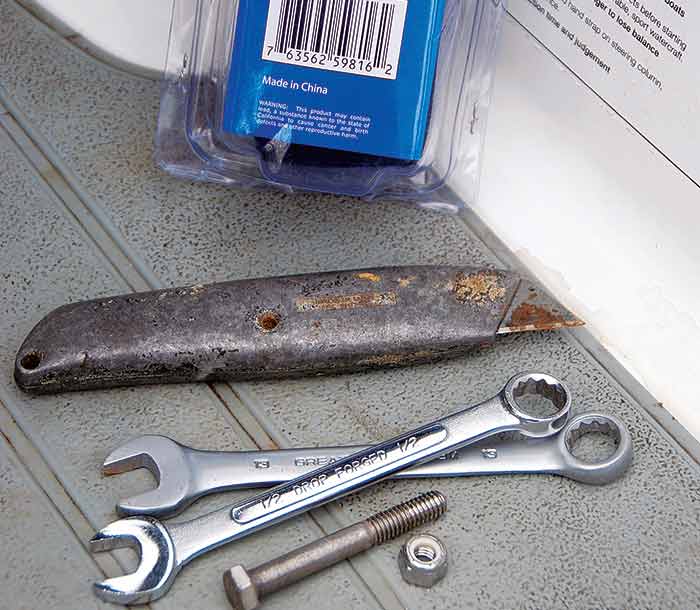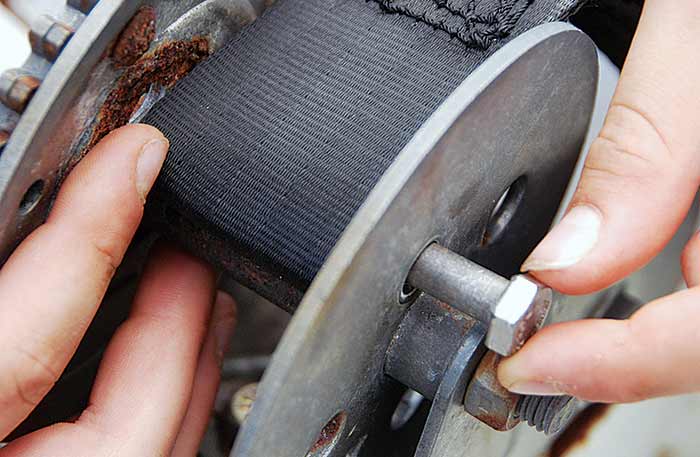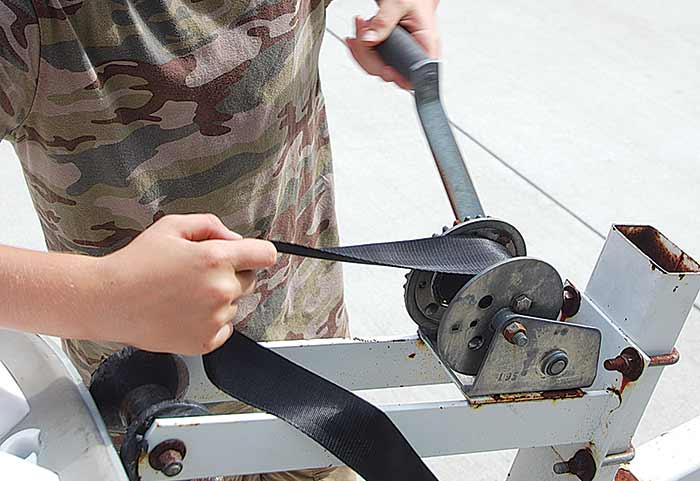Advertisement
Frayed, faded, stained, or torn — is your winch strap ready for replacement?

Frayed stitching, tears, cuts, and extreme fading are all signs that the winch strap needs to be replaced.
Be it by sun, moisture, misuse, or mere age, the time will come when you need to replace your boat trailer's winch strap. The signs of an ailing winch strap include frayed stitching, color fading, cuts, folds, tears, and twists. If yours shows any of these traits, do get it replaced before it fails just when you need it most, at the ramp. Fortunately, replacing a winch strap is a snap. In fact, I allowed my 10-year-old son to tackle the task on a PWC trailer we'd recently purchased while I documented the process in photos.

Other than a new strap, the tools required to replace a winch strap include box wrenches for the anchor bolt and perhaps a new bolt in case the original is damaged. A utility knife may be handy in case you need to cut off old webbing.
Rather than take for granted that the person who put on the existing strap did it correctly, the first step in the replacement process is to make sure you purchase the right strap for the winch. Determine the working load capacity of the winch, usually stamped somewhere on the winch or available from the manufacturer. Next, make sure the strap you purchase has a strength rating at or above that of the winch, and that both the strap and winch are rated for the weight of the boat.
Tip
Make sure the winch is designed for a webbing-type strap rather than rope or cable. Winches designed for use with webbing straps have a drum width of 2 inches or wider and a drum diameter of less than 13/4 inches. Webbing-strap winches also have a bolt (or holes for one) that goes through both sides of the spool adjacent to the drum. The bolt threads through the loop sewn into the end of the strap to anchor it on the drum when under tension. A winch built for use with rope will have only one hole on the side of the spool, through which the end of the rope is threaded and knotted or wound around to anchor it, and no bolt. Winches designed for use with cable will usually have a drum of at least 13/4 inches diameter, no bolt, and may be narrower than 2 inches.
Once you've determined that you have a winch designed for use with a webbing strap and have purchased the correct strap for the rig, the replacement job is simple. Here are steps in the process:

1. Remove the old strap by unwinding it off the winch drum. You may have to cut the old strap off the bolt to inspect or remove the anchor bolt.

2. Use the wrenches to loosen the locknut holding the strap anchor bolt in the drum and remove it. Replace the bolt and nut if needed.

3. Insert the bolt through the spool wall, through the loop sewn into the end of the new strap, and out through the opposite hole in the spool wall. Attach and tighten the locknut only enough to seat it securely on the bolt's threads and not tight against the spool.

4. Wind the new strap onto the winch drum, making sure it lies flat with no twists, creases, or folds.

5. Snap the new strap's hook to the boat's bow eye with the peace of mind that comes with having replaced an important component of your trailered rig.
Reverse Temptation
Don't succumb to the temptation of merely reversing, rather than replacing, the webbing strap on your boat's winch, such as you may do with the line on your fishing reel. Even if you trim back the worn end before reversing and reusing the strap, if the webbing is old enough to show wear at the working end, chances are good that the body of the material has suffered some, too. Plus, you'd have to sew a new loop into the anchor end and stitch a new hook into the boat end. Even if you locate an awning shop able to tackle the heavy-duty stitching, the expense and suspense you suffer with the patchwork job pales compared to the peace of mind from knowing you have a new connection between your beloved boat and the trailer.
